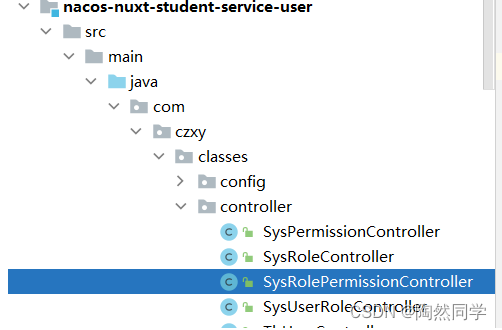为什么用AES加密16个字节时密文长度为32个字节?
我使用加密AES算法,当我加密16字节(一个块)时,结果是32字节。这样可以吗?
我使用的源代码是:
package net.sf.andhsli.hotspotlogin;
import java.security.SecureRandom;
import javax.crypto.Cipher;
import javax.crypto.KeyGenerator;
import javax.crypto.SecretKey;
import javax.crypto.spec.SecretKeySpec;
/**
* Usage:
* <pre>
* String crypto = SimpleCrypto.encrypt(masterpassword, cleartext)
* ...
* String cleartext = SimpleCrypto.decrypt(masterpassword, crypto)
* </pre>
* @author ferenc.hechler
*/
public class SimpleCrypto {
public static String encrypt(String seed, String cleartext) throws Exception {
byte[] rawKey = getRawKey(seed.getBytes());
byte[] result = encrypt(rawKey, cleartext.getBytes());
return toHex(result);
}
public static String decrypt(String seed, String encrypted) throws Exception {
byte[] rawKey = getRawKey(seed.getBytes());
byte[] enc = toByte(encrypted);
byte[] result = decrypt(rawKey, enc);
return new String(result);
}
private static byte[] getRawKey(byte[] seed) throws Exception {
KeyGenerator kgen = KeyGenerator.getInstance("AES");
SecureRandom sr = SecureRandom.getInstance("SHA1PRNG");
sr.setSeed(seed);
kgen.init(128, sr); // 192 and 256 bits may not be available
SecretKey skey = kgen.generateKey();
byte[] raw = skey.getEncoded();
return raw;
}
private static byte[] encrypt(byte[] raw, byte[] clear) throws Exception {
SecretKeySpec skeySpec = new SecretKeySpec(raw, "AES");
Cipher cipher = Cipher.getInstance("AES");
cipher.init(Cipher.ENCRYPT_MODE, skeySpec);
byte[] encrypted = cipher.doFinal(clear);
return encrypted;
}
private static byte[] decrypt(byte[] raw, byte[] encrypted) throws Exception {
SecretKeySpec skeySpec = new SecretKeySpec(raw, "AES");
Cipher cipher = Cipher.getInstance("AES");
cipher.init(Cipher.DECRYPT_MODE, skeySpec);
byte[] decrypted = cipher.doFinal(encrypted);
return decrypted;
}
public static String toHex(String txt) {
return toHex(txt.getBytes());
}
public static String fromHex(String hex) {
return new String(toByte(hex));
}
public static byte[] toByte(String hexString) {
int len = hexString.length()/2;
byte[] result = new byte[len];
for (int i = 0; i < len; i++)
result[i] = Integer.valueOf(hexString.substring(2*i, 2*i+2), 16).byteValue();
return result;
}
public static String toHex(byte[] buf) {
if (buf == null)
return "";
StringBuffer result = new StringBuffer(2*buf.length);
for (int i = 0; i < buf.length; i++) {
appendHex(result, buf[i]);
}
return result.toString();
}
private final static String HEX = "0123456789ABCDEF";
private static void appendHex(StringBuffer sb, byte b) {
sb.append(HEX.charAt((b>>4)&0x0f)).append(HEX.charAt(b&0x0f));
}
}回答 3
Stack Overflow用户
发布于 2011-06-26 19:31:11
如果你看一下specification section 5,你会发现输入、输出、和状态都是128位。唯一变化的是密钥的大小: 128、196或256位。因此,加密16字节的输入状态将产生16字节的输出状态。
你确定你没有把它和十六进制或类似的长度混在一起吗?如果它是十六进制的,那么它是正确的,因为对于每个字节,需要两个字符来表示它:00-FF (对于范围0-255)。因此,例如,16个字节将以十六进制表示法编码为32个字符。
另一种测试加密是否正确的方法是进行等效的解密,看看它是否与明文输入字符串匹配。
无论如何,它做了正确的事情。下面是一个测试:
public static void main(String[] args) {
try {
String plaintext = "Hello world", key = "test";
String ciphertext = encrypt(key, plaintext);
String plaintext2 = decrypt(key, ciphertext);
System.out.println("Encrypting '" + plaintext +
"' yields: (" + ciphertext.length() + ") " + ciphertext);
System.out.println("Decrypting it yields: " + plaintext2);
}
catch (Exception ex) {
ex.printStackTrace();
}
}这会产生:
加密'Hello world‘的结果:(32) 5B68978D821FCA6022D4B90081F76B4F
解密产生: Hello world
Stack Overflow用户
发布于 2011-06-27 00:14:18
AES默认使用PKCS#7兼容填充模式的ECB模式加密(对于到目前为止观察到的所有提供商)。如果输入的大小不完全是块大小的倍数,则ECB和CBC模式加密需要填充,其中16是以字节为单位的AES块大小。
不幸的是,取消填充机制可能无法区分填充和数据;数据本身可能表示有效的填充。因此,对于16字节的输入,您将获得另外16字节的填充。具有确定性的填充模式,例如PKCS#7,总是填充1到块大小的字节。
如果你看一下int output = cipher.getOutputSize(16);,你会得到32个字节。在解密过程中使用"AES/ECB/NoPadding"查看填充字节(例如4D61617274656E20426F64657765732110101010101010101010101010101010)。
当您完全指定算法时,您会过得更好。以前,大多数开发人员会选择"AES/CBC/PKCS5Padding",但现在可能应该使用"AES/GCM/NoPadding",因为它提供消息身份验证和完整性。否则,您将一直猜测实际使用的是哪种模式。
请注意,使用ECB模式是不安全的,因为攻击者可以从密文中检索信息;相同的明文块编码为相同的密文块。
Stack Overflow用户
发布于 2013-11-19 08:31:04
package com.cipher;
import java.security.InvalidAlgorithmParameterException;
import java.security.InvalidKeyException;
import java.security.NoSuchAlgorithmException;
import java.security.SecureRandom;
import javax.crypto.BadPaddingException;
import javax.crypto.Cipher;
import javax.crypto.IllegalBlockSizeException;
import javax.crypto.NoSuchPaddingException;
import javax.crypto.spec.IvParameterSpec;
import javax.crypto.spec.SecretKeySpec;
public class Encrypt {
public static void main(String[] args) throws NoSuchAlgorithmException, NoSuchPaddingException, InvalidKeyException, InvalidAlgorithmParameterException, IllegalBlockSizeException, BadPaddingException {
// TODO Auto-generated method stub
String s="You are doing encryption at deep level";
SecureRandom sr=SecureRandom.getInstance("SHA1PRNG");
sr.setSeed(s.getBytes());
byte[] k=new byte[128/8];
sr.nextBytes(k);
SecretKeySpec spec=new SecretKeySpec(k,"AES");
byte[] iv={0x00,0x00,0x00,0x00,0x00,0x00,0x00,0x00,0x00,0x00,0x00,0x00,0x00,0x00,0x00,0x00};
IvParameterSpec ivs=new IvParameterSpec(iv);
Cipher cps=Cipher.getInstance("AES/CBC/PKCS5Padding");
cps.init(Cipher.ENCRYPT_MODE,spec,ivs);
byte[] iv2=cps.doFinal(s.getBytes());
System.out.println("En"+iv2);
Cipher cpr=Cipher.getInstance("AES/CBC/PKCS5Padding");
cpr.init(Cipher.DECRYPT_MODE, spec,ivs);
byte[] iv3=cpr.doFinal(iv2);
String ds=new String(iv3);
System.out.println(ds);
}
}https://stackoverflow.com/questions/6486121
复制











